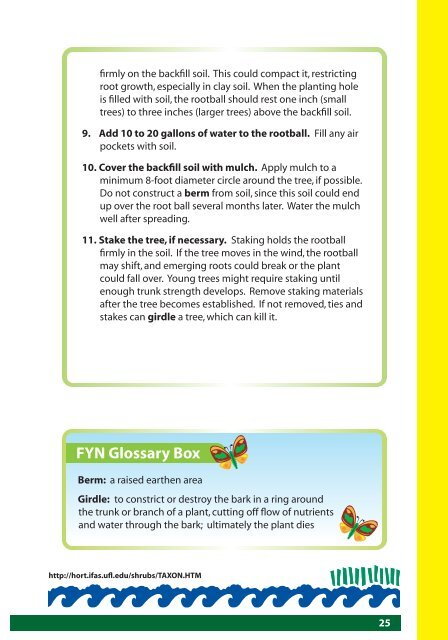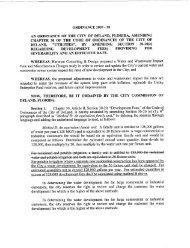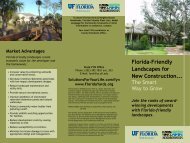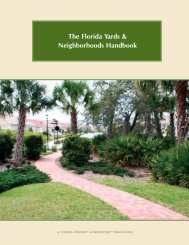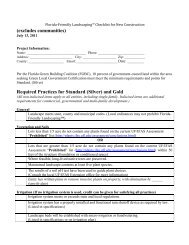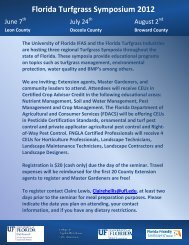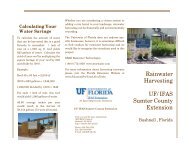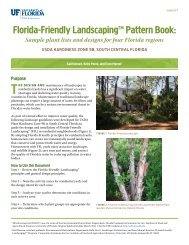A Guide to Florida-Friendly Landscaping A Guide to Florida-Fr ...
A Guide to Florida-Friendly Landscaping A Guide to Florida-Fr ...
A Guide to Florida-Friendly Landscaping A Guide to Florida-Fr ...
You also want an ePaper? Increase the reach of your titles
YUMPU automatically turns print PDFs into web optimized ePapers that Google loves.
firmly on the backfill soil. This could compact it, restricting<br />
root growth, especially in clay soil. When the planting hole<br />
is filled with soil, the rootball should rest one inch (small<br />
trees) <strong>to</strong> three inches (larger trees) above the backfill soil.<br />
9. Add 10 <strong>to</strong> 20 gallons of water <strong>to</strong> the rootball. Fill any air<br />
pockets with soil.<br />
10. Cover the backfill soil with mulch. Apply mulch <strong>to</strong> a<br />
minimum 8-foot diameter circle around the tree, if possible.<br />
Do not construct a berm from soil, since this soil could end<br />
up over the root ball several months later. Water the mulch<br />
well after spreading.<br />
11. Stake the tree, if necessary. Staking holds the rootball<br />
firmly in the soil. If the tree moves in the wind, the rootball<br />
may shift, and emerging roots could break or the plant<br />
could fall over. Young trees might require staking until<br />
enough trunk strength develops. Remove staking materials<br />
after the tree becomes established. If not removed, ties and<br />
stakes can girdle a tree, which can kill it.<br />
FYN Glossary Box<br />
Berm: a raised earthen area<br />
Girdle: <strong>to</strong> constrict or destroy the bark in a ring around<br />
the trunk or branch of a plant, cutting off flow of nutrients<br />
and water through the bark; ultimately the plant dies<br />
http://hort.ifas.ufl.edu/shrubs/TAXON.HTM<br />
25


